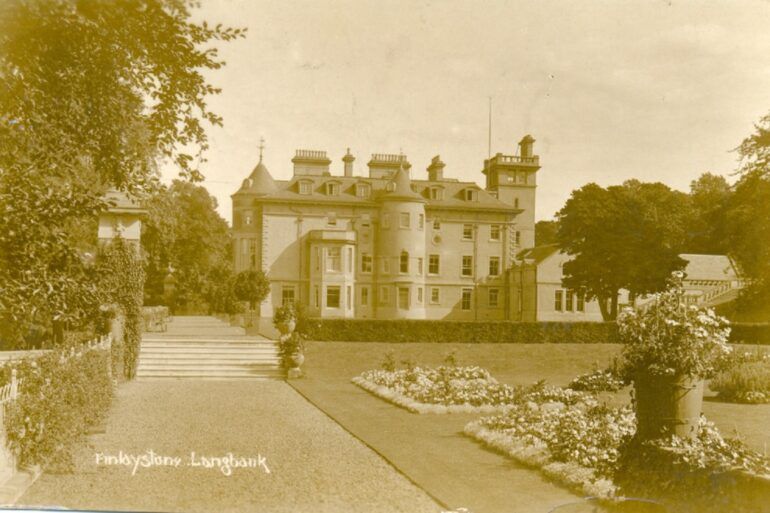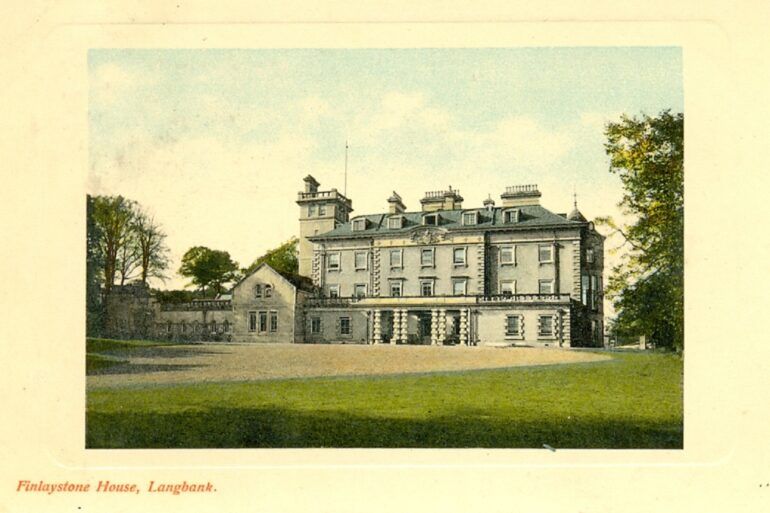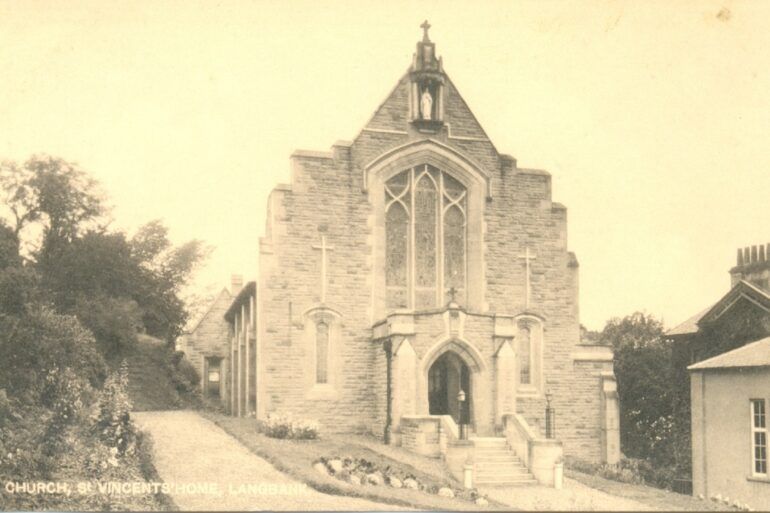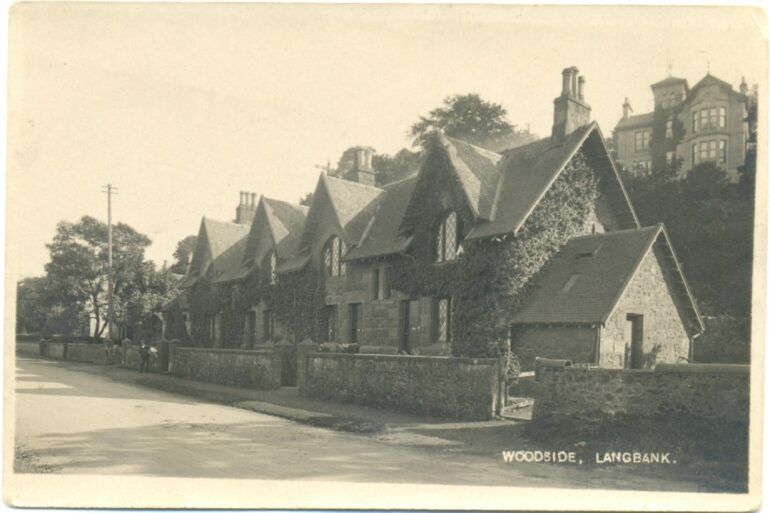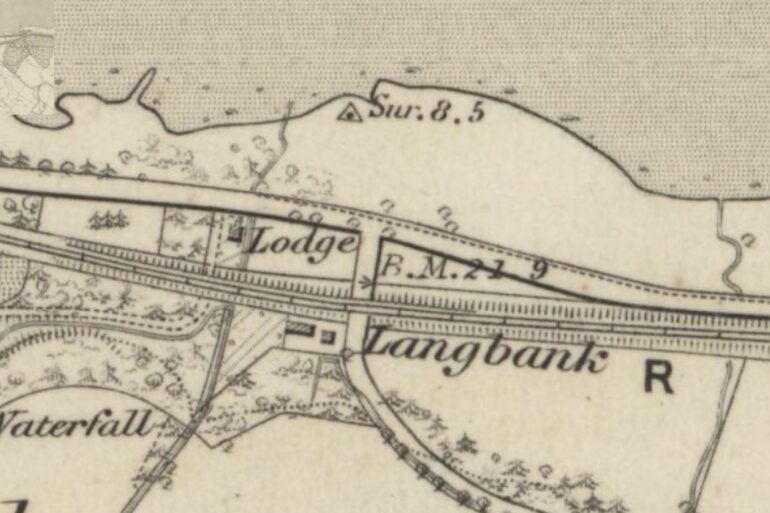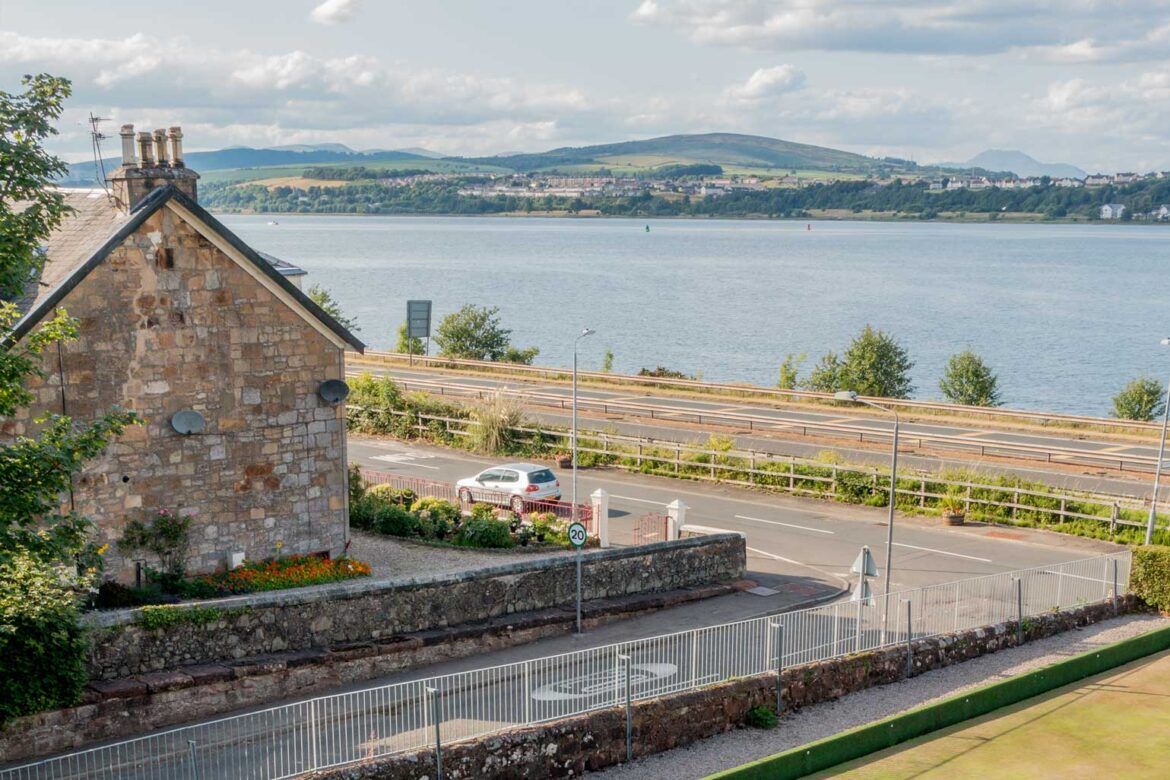Handily situated between Renfrewshire and Inverclyde, the name Langbank is said to be derived from “Long Bank” and was first referenced in a map from circa 1800.
According to historical sources, it was a reference to the Dyke that was built in the Clyde in order to keep the channel open by promoting what’s commonly known as tidal scour.
Flanked by small, artificial islands that are known as “crannogs” to its east and west, the area was previously viewed as a collective term for an assortment of nearby farms.
But long before Langbank was enshrined on the map, the area played host to a stately manor, namely, the Finlaystone Estate.
Set in five hundred acres of untampered woodland, the land was bestowed upon Sir John de Danyelstoun (or Dennistoun) by King Robert II in the late 14th century.
From there, a castle was constructed and after John’s passing, his daughter, Margaret, inherited what was known as Finlaystone House. By consequence of her marriage to Sir William Cunningham, it would be reinvented as the clan’s seat until the 19th century when it was sold to the Macmillan’s.
An estate that has underwent architectural transformations in both the 18th and 20th centuries– with the latter being overseen by John James Burnet, the man who crafted the design of Selfridges in London– the grounds and buildings remain under the control of the MacMillans to this day by 91-year-old clan chief George Gordon MacMillan.
While it likely underwent the most drastic remodeling, Finlaystone isn’t the only notable landmark in the area that hasn’t received extensive renovation. First erected in 1866, Langbank Parish Church has since had its spire rebuilt three times after it fell on numerous occasions.
From the outset of the 19th century, Langbank’s progression into a village came about on account of a railway line between Glasgow and Greenock necessitating the creation of new commuter settlements. Due to its proximity to both the mills of Renfrewshire and the shipyards of Inverclyde, it meant that no one industry became native to the village in the way that weaving had for other areas.
Soon, residential areas were created between Houston Road and Station Road. In keeping with the developments across the area, the land known as Middlepenny was soon incorporated into the newly minted hamlet as well.
As it became a thriving locale, affluent families began to flock to the area and procured land to build their own homes.
With the design overseen by architect and watercolorist Alexander Nisbet Paterson, Gleddoch House would be built as the home of shipbuilding reformer and Port Glasgow local Sir James Lithgow.
Repurposed from a mansion to a hotel in 1978 courtesy of Lithgow’s son Sir William and a privately owned consortium, the luxurious Gleddoch house would play host to dignitaries and sports personalities alike.
Among a litany of high profile guests, it became the favoured Renfrewshire accommodation of Queen Elizabeth herself. Over the years, she’d become a regular visitor when launching new ships in the nearby Ferguson’s Shipyard.
Years on, Gleddoch would serve as the very hotel that Real Madrid decamped to for their celebrations after lifting the Champions League trophy at Hampden in 2002.
On top of providing respite and relaxation to those visiting the area, the early 60’s saw Langbank become the site of a Roman Catholic seminary known as St Vincent’s College. An establishment where clergymen received their tutoring, the college is perhaps best known as the place where the late Filippo “Philip” Tartaglia, Archbishop Of Glasgow, received his theological education.
Ultimately, Trinity College had a fairly short period in existence, closing just 17 short years after it first welcomed in budding priests. Yet while those who received guidance and instruction there were relocated to Blairs College in Aberdeen, its physical presence in the village has persisted.
